|
You've probably seen newspaper ads and attention-getting banners displayed at local nurseries and garden centers proclaiming, "Fall is for Planting." But is it really wise to plant grass, bulbs, trees and shrubs at the end of a growing season and so close to winter? The answer to this question is a qualified yes. Fall planting can be successful as long as the planting season is not extended too late into the fall, if difficult-to-establish species are avoided, and if proper care (watering, mulching, staking if needed, etc.) is administered after planting. Fall is the time to plant, divide and transplant:
Trees & Shrubs For good reason, most people think of spring as the preferred planting season. Landscape plants installed in March, April, and May benefit from generous rains and the long growing season that stretches ahead. But more often than not, many regions receive too much precipitation that makes planting difficult, especially on poorly drained sites. Furthermore, the sudden onset of hot, dry weather that typically displaces an often too-short spring can injure tender new plantings. Because of these difficulties, plant trees and shrubs during the period from mid-August to mid-October (zone 5 & 6). During this time, moderate and relatively stable air temperatures prevail, and soil temperatures and moisture levels are usually in a range that promote rapid root development. If you wait too long into the fall season (November - December) to plant, you run the risk of poor root growth and increased failure rate. Conifers, in fact, need a slightly earlier start than hardwoods, preferring the warmer soil temperatures of the summer to early fall. Some other slow- to-establish species are best planted in spring. These include: Trees for Spring Planting
In general, install plants with shallow, fibrous root systems in the fall rather than those with fewer, larger roots. Trees that can be successfully planted in the fall include: Trees for Fall Planting
Most deciduous shrubs can easily be planted in fall, except for two types: broadleaved evergreens such as rhododendrons and narrow-leafed evergreens such as yews. Both prefer spring planting. Nurseries sell trees and shrubs in many forms—bare root, container-grown, balled and burlapped, or dug by tree spade. Transplanting can be successful with all forms. Always put extra effort into the planting process to ensure a good start for your plant. The faster the root system is re-established, the better the chances for survival, and the more rapidly your new tree or shrub will grow. Before planting anything this fall, do some soul searching and ask yourself these questions: What do I want from this tree? (fall color, flowers, shade, fast growth, etc.)
Bulbs September and October are the best months for planting bulbs. This will allow ample time for the bulbs to become well rooted before the ground freezes. Bulbs planted after October may not have time to root adequately and therefore may not flower uniformly in the spring. Freezing and thawing during the winter may also push an unrooted bulb out of the ground. Plant the bulbs at a depth consistent with the level indicated on the bulb’s directions. As a general rule, this depth is four times the height of the bulb between the soil surface and the tip of the bulb. Make sure to plant the bulbs with the growing tip up. After the ground freezes, cover the bed with a 3-inch mulch to prevent alternate freezing and thawing that breaks roots and damages bulbs. When purchasing bulbs, be attentive to size. There is a direct correlation between the size of a bulb and the size of the flower grown from that bulb. For more details on planting bulbs visit Colorado State University Extension website. 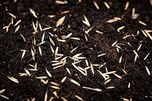 Lawns Most of the turf grass grown in Zone 5/6 lawns is “cool season,” including Kentucky bluegrass (Poa pratensis), perennial ryegrass (Loliam perenne), and fine fescues (Festucaspp.) Because these grasses grow best in cool weather, late summer to early fall is an ideal time to plant a new lawn, patch bare areas, or overseed an existing lawn. Grass seed must receive regular irrigation, especially until it begins to germinate. This is more likely to happen naturally in fall rather than in spring, when the new grass must withstand hot summer days. When purchasing, you may find grass seed embedded in what looks like dryer lint. The premise is that this will hold water when the seed is planted and watered. Though this may seem like a good idea, the best practice for getting grass seed to sprout is by making sure it has good contact with the soil. Loosening the top of soil before planting or raking the seed in will achieve this. Newly planted seed may be mulched with a light layer of straw. 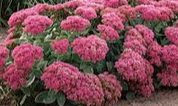 Perennials Why should spring get all the glory? While you might not think of fall as a time to get outside and plant new perennials, it actually presents a golden opportunity to do just that. Not only is it bargain time for many perennials at the garden store, the growing conditions are perfect for establishing roots. In autumn, the garden’s peak is fresh in your mind, so it’s easy to remember where you need to add some pizzazz. Remember that dead spot you noticed in midsummer? How about the garden bed that needs a splash of yellow or blue? Now is the time to address those areas. In Zones 6 and 7, the cool-down period starts around the end of September, about six weeks before the first fall frost. This is the ideal time to start your fall planting. In Zones 3 to 5, you’ll want to plant earlier if you can. And of course, Zones 8 to 11 can pretty much plant year-round without a problem. (Lucky!) Still, you want to get an early start to give roots time to get established. Wait until the soil freezes hard, then spread a few inches of mulch around your perennials—not to prevent soil from freezing, but to keep it from thawing. Roots that aren’t solidly anchored can “frost heave” out of the soil when the ground freezes and thaws, putting the plant in danger of getting killed by cold. Once mulch is on, you’re all set. Even if a few of your new perennials don’t make it, you’re probably still coming out ahead. Fall planting gives you a big jump on spring gardening, so you have more time in the busy season. Below are some perennials that do well when planted in the fall. Perennials for Fall Planting
The most common plant problem is not an insect or a diseases—it is us. We do a great job of killing plants we obviously intended to grow. Please use these resources to incorporate important cultural practices that impact the survivability of newly installed plants. There are many websites that offer pictures and detailed fall planting instructions. Good resources usually include an arboretum or your state’s cooperative extension. Here are a few websites we like: Purdue, Penn State, Virginia Tech We hope you take advantage of the cooler temperatures to do some fall planting. The array of plants available extends far beyond chrysanthenums, and very well may be discounted for the end of the season. Happy autumn planting!
|
Thank you for finding us! Holly and I have collaborated to bring you informative, fun, and seasonal garden inspiration blogs.
Subscribe to receive our blogs on the 1st and 15th of the month--Gwen Follow my landscape & garden design Pinterest Page to see more pics, inspiration and Gwen's home garden journey!
AuthorsGwen Wisniewski: Landscape and Garden Designer. Contact me. Let me help you integrate these garden inspirations. Choose the links below to find out more about my landscape design service or to make an appointment. |
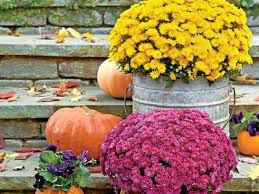
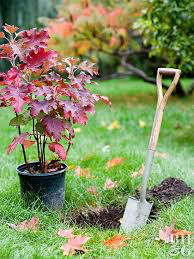
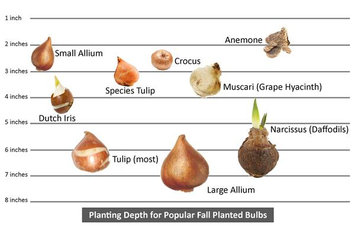
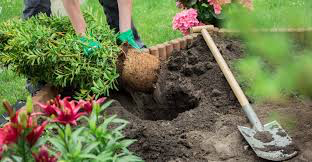


 RSS Feed
RSS Feed